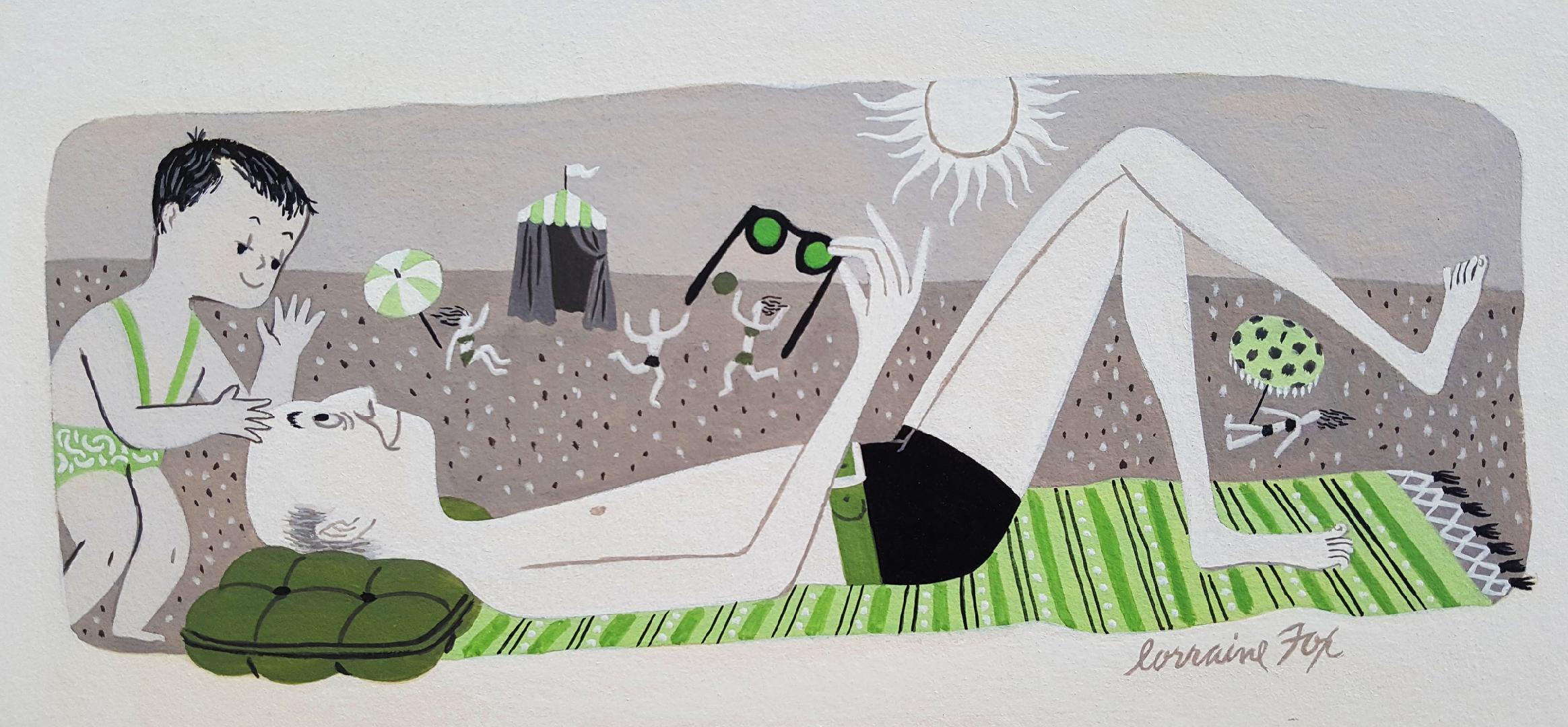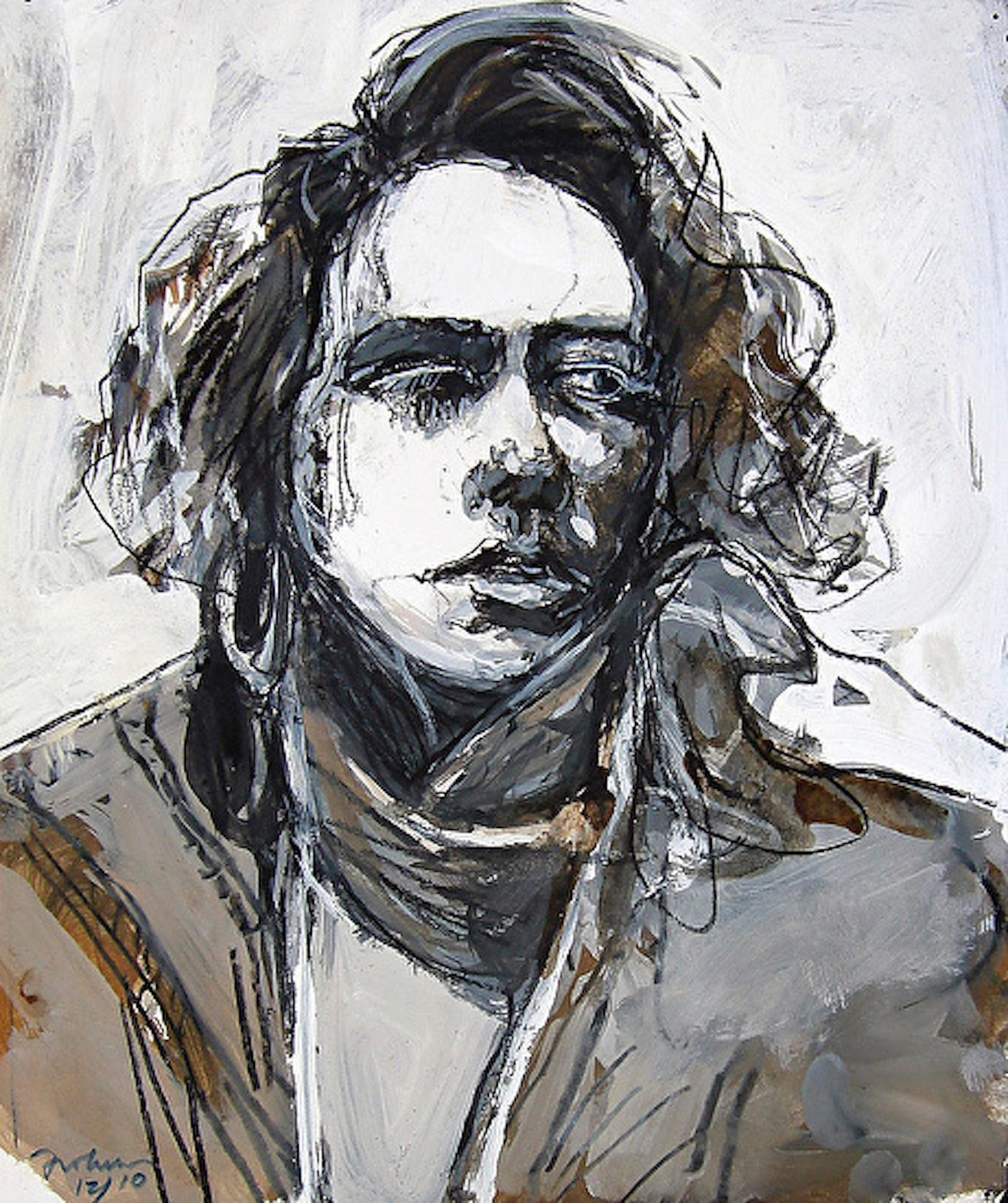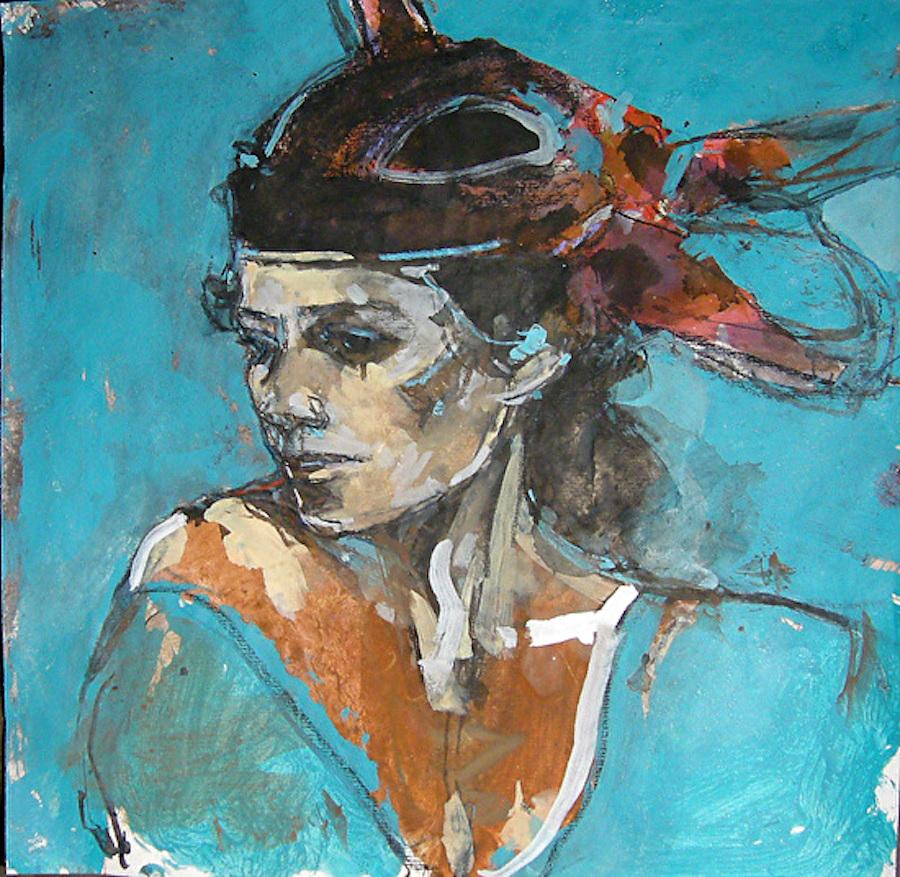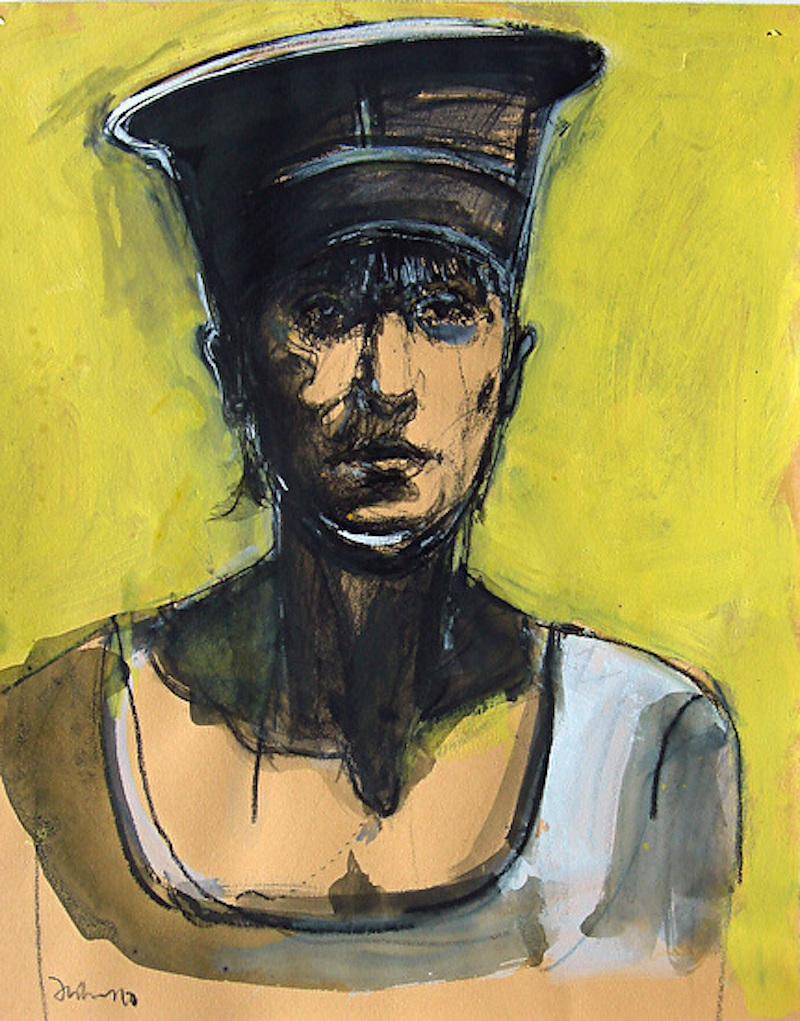Items Similar to Apocalypse, Catastrophic Destruction of the World, Surrealism - Life Magazine
Video Loading
Want more images or videos?
Request additional images or videos from the seller
1 of 9
Richard ErdoesApocalypse, Catastrophic Destruction of the World, Surrealism - Life Magazine1962
1962
About the Item
Apocalypse in 1962? At the height of the Cold War, Life Magazine commissions an illustration that describes the world's end by means other than a nuclear war with Russia. Richard Erdoes brilliantly illustrates the work with his highly stylized painting technique. My favorite part of the work is on the left side showing a group of people packed together as they fall into oblivion. A clear reference would be Hieronymus Bosch's "The Last Judgment "
Once Again the World Ends." Illustration published in Life Magazine, Feb. 9, 1962
Signed in lower right image.
Unframed
Richard Erdoes (Hungarian Erdős, German Erdös; July 7, 1912 – July 16, 2008) was an American artist, photographer, illustrator and author.
Early life
Erdoes was born in Frankfurt,[1] to Maria Josefa Schrom on July 7, 1912. His father, Richárd Erdős Sr., was a Jewish Hungarian opera singer who had died a few weeks earlier in Budapest on June 9, 1912.[2] After his birth, his mother lived with her sister, the Viennese actress Leopoldine ("Poldi") Sangora,[3] He described himself as "equal parts Austrian, Hungarian and German, as well as equal parts Catholic, Protestant and Jew..."[4]
Career
He was a student at the Berlin Academy of Art in 1933, when Adolf Hitler came to power. He was involved in a small underground paper where he published anti-Hitler political cartoons which attracted the attention of the Nazi regime. He fled Germany with a price on his head. Back in Vienna, he continued his training at the Kunstgewerbeschule, now the University of Applied Arts, Vienna.[5] He also wrote and illustrated children's books and worked as a caricaturist for Tag and Stunde, anti-Nazi newspapers. After the Anschluss of Austria in 1938 he fled again, first to Paris, where he studied at the Academie de la Grande Chaumiere, and then London, England before journeying to the United States. He married his first wife, fellow artist Elsie Schulhof (d. xxxx) in London, shortly before their arrival in New York City.
In New York City, Erdoes enjoyed a long career as a commercial artist, and was known for his highly detailed, whimsical drawings. He created illustrations for such magazines as Stage, Fortune, Pageant, Gourmet, Harper's Bazaar, Sports Illustrated, The New York Times, Time, National Geographic and Life Magazine, where he met his second wife, Jean Sternbergh (d. 1995) who was an art director there. The couple married in 1951 and had three children.[6] Erdoes also illustrated many children's books.
An assignment for Life in 1967 took Erdoes to the Pine Ridge Indian Reservation for the first time, and marked the beginning of the work for which he would be best known. Erdoes was fascinated by Native American culture, outraged at the conditions on the reservation and deeply moved by the Civil Rights Movement that was raging at the time. He wrote histories, collections of Native American stories and myths, and wrote about such voices of the Native American Renaissance as Leonard and Mary Crow Dog and John Fire Lame Deer.[7] The Erdoes' New York City apartment was a well known hub of the American Indian Movement (AIM) in the early 1970s[citation needed] and he became involved in the legal defense of several AIM members.[citation needed] In 1975 the family moved to Santa Fe, New Mexico where Erdoes continued to write and remained active in the movement for Native American civil rights.
His papers are preserved at the Beinecke Rare Book and Manuscript Library at Yale University.[8]
Works
As author:
Peddlers and Vendors Around the World (1967) OCLC 469694
Policemen Around the World (1967) OCLC 268889
Musicians Around the World (1971) ISBN 9780070195646
The Sun Dance People: The Plains Indians, Their Past and Present (1972) ISBN 9780394923161, 9780394823164, 9780394708034
The Rain Dance People: The Pueblo Indians, Their Past and Present (1976) ISBN 9780394823942, 9780394923949
The Woman Who Dared (1978) ISBN 9780449139752
Saloons of the Old West (1979) ISBN 9780517181737
The Native Americans: Navajos (1979) ISBN 9780806927404
Native Americans: The Sioux (1982) ISBN 9780806927428, 9780806927435
Native Americans: The Pueblos (1983) ISBN 9780806927442, 9780806927459
The Richard Erdoes Illustrated Treasury of Classic Unlaundered Limericks (1984) ISBN 9780917439018
A.D. 1000: Living on the Brink of Apocalypse (1988) ISBN 9780062502957
Crying for a Dream: The World through Native American Eyes (1990) ISBN 9780939680573
Tales from the American Frontier (1992) ISSN 0362-8930
Legends and Tales of the American West (1998) ISBN 9780375702662
As illustrator:
The Cat and The Devil (1964) by James Joyce OCLC 168545
Come over to My House (1966) by Theo. LeSieg (pen name of Theo Geisel aka Dr. Seuss)[9] ISBN 9780001713130, 9780001711297
The Spotted Stones (1978) by Silvio Bedini ISBN 9780394835730, 9780394935737
As editor, collector or collaborator:
Lame Deer, Seeker of Visions (1972), with John Fire Lame Deer ISBN 9780671211974
The Sound of Flutes and Other Indian Legends (1976), with John Fire Lame Deer ISBN 9780394831817, 9780394931814
American Indian Myths and Legends (1984), with Alfonso Ortiz ISBN 9780394507965, 9781564310293
Lakota Woman (1991) by Mary Crow Dog ISBN 9780060973896
Crow Dog, Leonard; Erdoes, Richard (1995). Crow Dog: Four Generations of Sioux Medicine Men. HarperCollins Publishers. ISBN 978-0-06-016861-2.
American Indian Trickster Tales (1999), with Alfonso Ortiz ISBN 9780140277715
Ojibwa Warrior: Dennis Banks and the Rise of the American Indian Movement (2005), with Dennis Banks ISBN 9780806135809
Ohitika Woman (2009), with Mary Brave Bird ISBN 9780802191564
- Creator:Richard Erdoes (1912 - 2008, American)
- Creation Year:1962
- Dimensions:Height: 7.5 in (19.05 cm)Width: 14.25 in (36.2 cm)Depth: 1 in (2.54 cm)
- Medium:
- Movement & Style:
- Period:
- Condition:The work comprises several pieces pasted together and glued on board—some scattered discoloration to black ink. Slight warping to paper on extreme edges.
- Gallery Location:Miami, FL
- Reference Number:1stDibs: LU385313987902
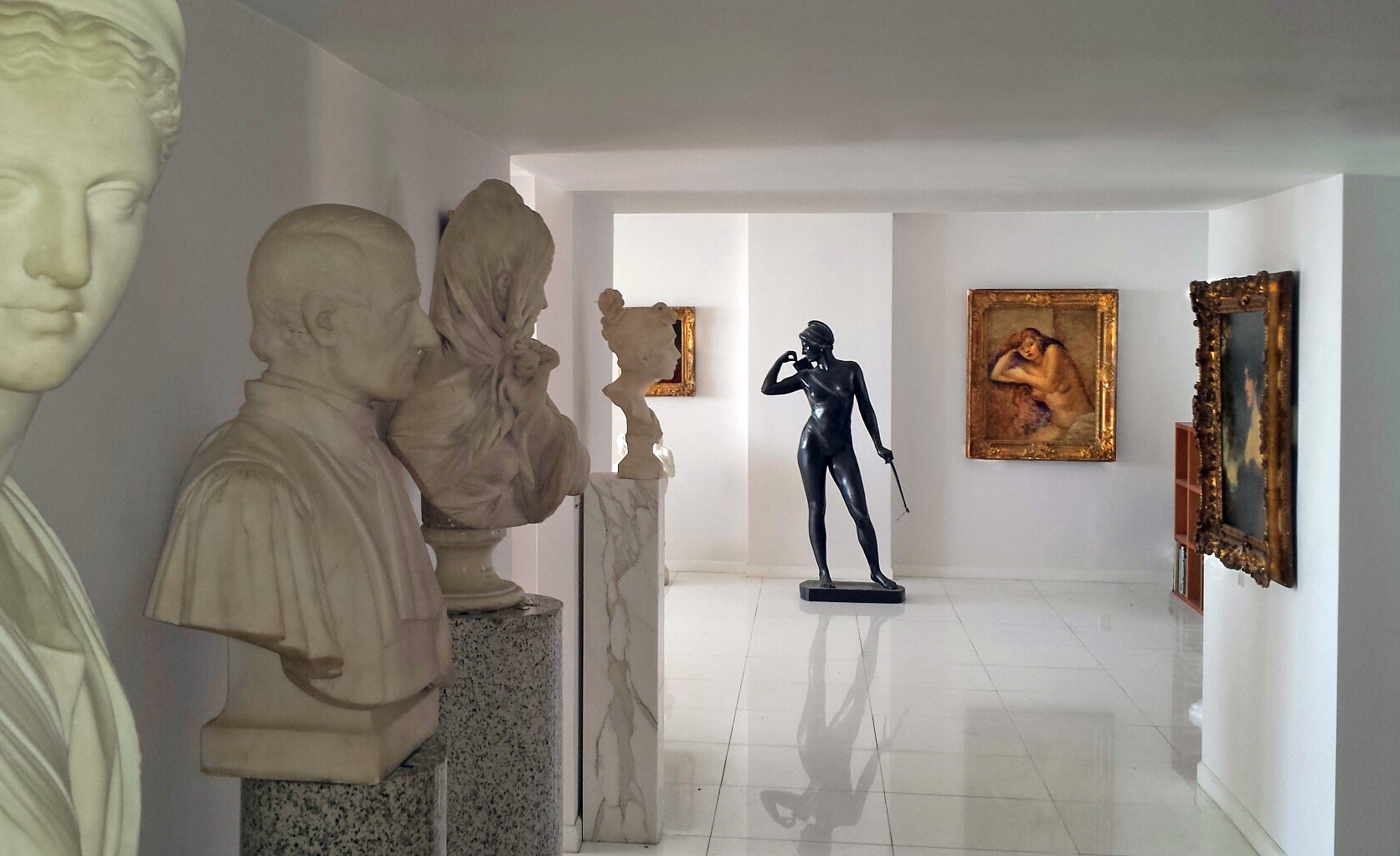
About the Seller
4.9
Gold Seller
These expertly vetted sellers are highly rated and consistently exceed customer expectations.
Established in 2005
1stDibs seller since 2016
102 sales on 1stDibs
Typical response time: 1 hour
- ShippingRetrieving quote...Ships From: Miami, FL
- Return PolicyA return for this item may be initiated within 3 days of delivery.
More From This SellerView All
- Father and Son at the Beach - Female IllustratorBy Lorraine FoxLocated in Miami, FLGenerations ahead of the pack, little-known Lorraine Fox developed a simple, charming and flat style that is emulated today but not equaled. Her work is rooted in sound academic trai...Category
1940s Feminist Figurative Drawings and Watercolors
MaterialsGouache, Board
- Mother and Child, Golden Age of IllustrationBy Jessie Willcox SmithLocated in Miami, FLAmerica's greatest female illustrator draws a heartwarming picture of a mother putting to bed her child. Motherly love towards their children is the artist's most iconic theme. This ...Category
Early 1900s Art Nouveau Figurative Drawings and Watercolors
MaterialsInk, Illustration Board, Pen
- Abstract Silhouette Hat Portraits - Female Illustrator of Golden AgeBy Jessie GillespieLocated in Miami, FL115 years after they were created, one can view these silhouettes differently than the artist’s intent. After all, the genesis of this work was an editorial illustration for Life Magazine to showcase elaborate women’s hats. They were done for a commercial assignment with a deadline, and picky editors were overseeing the final work. Today, they have a dual meaning. These charming silhouettes are abstractions as much as they are representations. Moreover, each one is a compact little gem stuffed with observational detail. Golden Age female illustrator Jesse Gillespie's mastery of technical skill, is apparent in minute details and composition. Young women, old women, pendants, necklaces, feathers, and laced vails all contribute to the works understated complexity. The identity of the subjects are revealed by small areas of exposed neck and chin. As the viewers eyes goes from left to right - all six silhouettes read as fashion hieroglyphs in a sentence with a visual rhythm and cadence. . Initialed JG lower right., Matted but not framed. Published: Life Magazine, March 17th, 1910. Provenance: Honey and Wax Bookstore ________________________________ From Wikipedia, the free encyclopedia Jessie Gillespie Willing (March 28, 1888 – August 1, 1972) was an American illustrator during the Golden Age of illustration. She was considered the foremost silhouette illustrator of her time, although she did traditional illustration as well. Willing illustrated for books and magazines including Life, The Ladies' Home Journal, Woman's Home Companion, Mother and Child, McClure's Magazine, Childhood Education, the Sunday Magazine, Association Men (the magazine of the YMCA), Farm and Fireside, Every Week, Children: The Magazine for Parents (which became Parents Magazine), and the American Magazine. She is perhaps most well known for her work for the Girl Scouts. Early life Willing was born in Brooklyn on March 28, 1888 to John Thomson Willing (August 4, 1860 – July 8, 1947)[1][2] and Charlotte Elizabeth Van Der Veer Willing (December 1, 1859 – March 4, 1930).[3] Thomson Willing was a noted illustrator and art editor. He was also well known for finding new artistic talent. Jessie Willing was the eldest of three children. Her brother Van Der Veer (November 30, 1889 – January 14, 1919), who died of pneumonia at the age of 29, was an advertising agent.[4] Her sister Elizabeth Hunnewell Willing (July 26, 1908 – August 15, 1991) was one of the first women to graduate from the Philadelphia Divinity School.[5][6] Elizabeth married the Rev. Orrin Judd, rector of St. Mary's Episcopal Church, on September 22, 1931, and was active in church work.[citation needed] The Willing family moved to the Germantown neighborhood of Philadelphia in 1901 or 1902. Jessie Willing attended the Stevens School, from which she graduated in 1905. She then went on to attend the Philadelphia Academy of Fine Arts from 1906 to 1907.[7][8] Career Willing used her middle name Gillespie as her professional surname. She also often signed her illustrations J.G.[9] The story goes that the art editor of Life magazine was in Thomson Willing's office when he was the art editor of the Associated Sunday Magazine syndicate. Thomson Willing had some of Jessie's artwork on his desk, which the Life editor saw and admired. He asked for the artist's information so that he could give her freelance work. Thomson Willing did not want to be accused of nepotism so he persuaded Jessie to use Jessie Gillespie as her professional name, which she did.[10][11] In addition to her extensive illustration work, Willing was also the editor of Heirlooms and Masterpieces from 1922 to 1931 and the art editor of Jewelers' Circular-Keystone from 1933 to 1939.[12] She specialized in jewelry publicity and advertising. In 1966 she won the Gold medal of the Printing Week Graphic Arts Exhibit in Philadelphia for her Christmas catalog for J.E. Caldwell Co., Philadelphia. Willing was a member of the Plastic Club of Philadelphia,[13] the American Institute of Graphic Arts (AIGA) and the National Arts Club of New York.[14] She was an honorary life member of the National Arts Club[15] and served on its Board of Governors from 1941-1970. In 1963, she received the Gold Medal of the National Arts Club in recognition of 32 years of selfless devotion.[15] Additionally, she was the national director of the American Institute of Graphic Arts (AIGA) from 1943 to 1946.[15] Previous to this she served as the Program Chairman of the AIGA and in that position she put together a travelling exhibit on the "history of narrative art from the first recorded picture story to the comic book of the twentieth century."[16][17] Illustrations in books With Tongue and Pen--Frederick Bair, et al. (MacMillan, 1940) Masoud the Bedouin--Alfred Post Carhart (Missionary Education Movement, 1915) The Path of the Gopatis--Zilpha Carruthers (National Dairy Council, 1926) The Schoolmaster and His Son: A Narrative of the Thirty Years War--Karl Heinrich Caspari (Lutheran Publication Society, 1917) On a Rainy Day--Dorothy Canfield Fisher and Sarah Scott Fisher (A.S. Barnes and Co., 1938) Book of Games for Home, School and Playground--William B. Forbush and Harry R Allen...Category
1910s Victorian Portrait Drawings and Watercolors
MaterialsInk, Illustration Board, Pen
- Art Deco 1940s High Fashion Illustration Woman with Fan and ScreenLocated in Miami, FLFrench female illustrator Geneviève Thomas renders a highly stylized fashion illustration set against a seamless red background, The model is wearin...Category
1940s Art Deco Figurative Drawings and Watercolors
MaterialsWatercolor, Gouache
- Vogue Magazine Illustration Turn of the Century - Woman IllustratorBy Helen DrydenLocated in Miami, FLEarly in the artist's career most likely for Vogue Magazine. Signed lower left. Helen Dryden (1882–1972) was an American artist and successful industrial designer in the 1920s and 1...Category
1910s Academic Figurative Drawings and Watercolors
MaterialsPencil, Graphite, Gouache, India Ink
- Man looking into WindowBy Everett ShinnLocated in Miami, FLOriginal Magazine Illustration for a magazine like Harper's, Vanity Fair, Life, Look, and Judge Shinn was an American realist painter and member of the Ashcan School. He also exhibited with the short-lived group known as "The Eight," Work is framed in an attractive gilt frame Morris Weiss collection...Category
1910s American Realist Figurative Drawings and Watercolors
MaterialsAcrylic Polymer, Gouache, Pencil, Watercolor
You May Also Like
- Big Baloo / Head Study No. 86By Kim FrohsinLocated in Burlingame, CABig Baloo / Head Study No. 86 , drawing / painting featuring the head portrait of a young woman. in blue, pink, gold and white. The work is created with mixed media on Bristol paper,...Category
21st Century and Contemporary Contemporary Portrait Drawings and Waterco...
MaterialsMixed Media, Crayon, Charcoal, Gouache, Color Pencil
- Bright Lashes / Head Study No. 93By Kim FrohsinLocated in Burlingame, CABright Lashes / Head Study No. 93, drawing / painting featuring the head portrait of a young woman. in monochromatic grey, brown and white. The work is created with mixed media on ar...Category
21st Century and Contemporary Contemporary Portrait Drawings and Waterco...
MaterialsCrayon, Charcoal, Mixed Media, Gouache, Color Pencil
- For Nicolai / Head Study No. 88By Kim FrohsinLocated in Burlingame, CAFor Nicolai / Head Study No. 88 , drawing / painting featuring the head portrait of a young woman. in blue. The work is created with mixed media on paper, including stabilo pencil, g...Category
21st Century and Contemporary Contemporary Figurative Drawings and Water...
MaterialsInk, Gouache, Charcoal, Mixed Media, Watercolor, Color Pencil
- The Typographer - Original Mixed Media by Jean Marchal - Mid-20th CenturyLocated in Roma, ITThinking Man is an original painting in tempera, pen, gouache, and mixed media realized by Jean Marchal. Hand-signed on the lower left. The state of preservation of the artwork is ...Category
Mid-20th Century Modern Figurative Drawings and Watercolors
MaterialsPen, Tempera, Mixed Media, Gouache
- Wartime / Head Study No. 76By Kim FrohsinLocated in Burlingame, CAWartime / Head Study No. 76 , drawing / painting featuring the head portrait of a young woman. in yellow. The work is created with mixed media on Canson paper, including stabilo penc...Category
21st Century and Contemporary Contemporary Portrait Drawings and Waterco...
MaterialsCrayon, Charcoal, Mixed Media, Gouache, Color Pencil
- Portrait of George Arliss in Conte Crayon on Cardstock 1934Located in Soquel, CAStately portrait of George Arliss by Ivan Opffer (Danish, 1897-1980). Mr. Arliss is depicted wearing his signature monocle, looking directly at the viewer. Although this piece appears to be done rapidly, there is a clear confidence in Opffer's work - he was an accomplished portrait artist - and the resemblance to the subject is unmistakable. George Arliss (born Augustus George Andrews; 10 April 1868 – 5 February 1946) was an English actor, author, playwright, and filmmaker who found success in the United States. He was the first British actor to win an Academy Award – which he won for his performance as Victorian-era British prime minister Benjamin Disraeli in Disraeli (1929) – as well as the earliest-born actor to win the honour. He specialized in successful biopics, such as Disraeli, Voltaire (1933), and Cardinal Richelieu (1935), as well as light comedies, which included The Millionaire (1931) and A Successful Calamity (1932). Signed and dated "Ivan Opffer 1934" in the lower right. Titled "Mr. Arliss" in the lower left. Presented in a new off-white mat with foamcore backing. Mat size: 22"H x 16"W Art size: 17.5"H x 12"W Ivan Opffer (Danish, 1897-1980) was born in Nyborg, Denmark, on June 4, 1897, to a family of Danish scholars and journalists. His brother was Emil Opffer, a Danish merchant seaman and journalist who was known for his relationship with American writer Hart Crane. Ivan was raised in Mexico City and New York, where his anarchist father was the editor of a radical Danish-language newspaper. His involvement in painting and drawing began at an early age. At a summer workshop, he met and studied drawing with Winslow Homer, then went on to study at the National Academy of Design and the Art Students League of New York. When the US entered World War I, Opffer was one of the members of the American Army Camouflage Corps, headed by Homer Saint-Gaudens (whose mother was a relative of Winslow Homer), the son of Augustus Saint-Gaudens. As a camoufleur, Opffer served with other artists and architects, some of whom became well-known, including Barry Faulkner, Sherry Edmundson Fry, Kimon Nicolaides, Robert Lawson, Abraham Rattner, Kerr Eby, and others. It was this same unit, while still in training in at Camp American University in Washington DC, that launched a camp newspaper called The Camoufleur. Only three issues were published before the unit’s deployment to France in late 1917. In the October 31 issue, a satirical portrait by Opffer of Homer Saint-Gaudens (titled “Our Boss”) was published on page 5. After the war, Opffer returned to New York, where he became known for his caricatures of leading Modern writers, among them James Joyce, Edgar Lee Masters, Siegfried Sassoon, George Bernard Shaw, Carl Sandburg, G.K. Chesterton, and Thomas Mann. In the years between the wars, Opffer married Betty à Beckett Chomley, and settled in Paris, where he was a student at the Academie Julliard. He also lived in London and Copenhagen, where his drawings were frequently published in newspapers and magazines. With the outbreak of World War II, he and his family returned to New York and lived in Greenwich Village. Among his friends in that era were William Butler Yeats, F. Scott and Zelda Fitzgerald...Category
1930s American Impressionist Portrait Drawings and Watercolors
MaterialsConté, Postcard, Illustration Board
